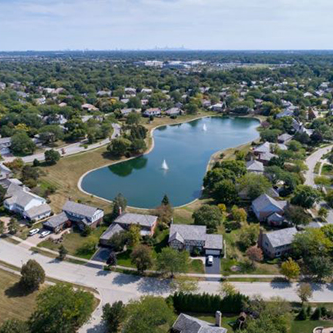Understanding the Hierarchy of Governing Documents in a Community Association
Living in a community association entails adhering to a set of governing documents that guide residents, maintain order, and protect property values. These documents exist within a hierarchical structure, each serving a specific purpose and establishing a distinct level of authority. This blog post will explore the hierarchy of governing documents in a community association, starting with federal laws and progressing through local authority and the rules and regulations in your neighborhood.
1. Federal Laws
At the top of the hierarchy are federal laws governing all citizens and business entities. These laws include regulations concerning property rights, fair housing, taxation, and more. Associations must comply with these laws, as they dictate how the Board must govern on issues that are constitutional or regulated by federal or state agencies.
2. State Laws
State laws generally establish the foundation for the legal framework within which associations operate. Examples are the Non-profit Corporations Act, stormwater management laws, or state-specific regulations related specifically to homeowner associations.
3. County/City Ordinances
At the local level, counties and municipalities establish ordinances that dictate many aspects of homeowner’s association operations. Examples include building setback requirements, noise ordinances, and many other regulations the board must know.
4. Plat Map
A plat map, also known as a subdivision map, is a legal document that illustrates the boundaries, lots, and common areas within a community association. It provides a graphical representation of the physical layout of the neighborhood and serves as a reference for property boundaries and other relevant details. Plat maps are essential for understanding the physical structure of the community and can help resolve boundary disputes or determine common area ownership.
It provides a graphical representation of the physical layout of the neighborhood and serves as a reference for property boundaries and other relevant details. Plat maps are essential for understanding the physical structure of the community and can help resolve boundary disputes or determine common area ownership.
5. Articles of Incorporation
The articles of incorporation establish the legal existence of the community association as a corporation. This document outlines the association's purpose, structure, powers, and limitations. It typically includes details such as the association's name, registered agent, and the duration of its existence. Articles of incorporation are filed with the state and serve as a legal foundation for the community association's operations. Not all associations are incorporated, as laws vary from state to state. However, it is generally accepted that incorporation adds protection for volunteers who serve the community as board members and protects homeowners who are members of the association.
6. Covenants, Conditions, and Restrictions (CC&Rs)
CC&Rs are legally binding agreements that outline the rights and responsibilities of homeowners within a community association. They establish standards for property use, architectural guidelines, maintenance obligations, and restrictions on certain activities. CC&Rs are crucial in maintaining a cohesive and harmonious living environment while protecting property values. Covenants, Conditions, & Restrictions are binding and run with the land. This means that anyone who buys the land agrees to abide by the covenants and accepts the restrictions that exist when they take title to the property. For example, CC&Rs may prohibit boats from being parked on a property. CC&Rs can be changed by amendment; however, the bar is set high for passing such amendments since the CC&Rs define the identity of the development and are an important consideration in buying a home.
7. Bylaws
Bylaws provide a detailed framework for how the community association operates and are often considered its "constitution." They outline the procedures for electing board members, holding meetings, adopting rules, collecting assessments, and handling disputes. Bylaws address governance matters and provide a roadmap for decision-making and administrative processes within the association.
The developer usually files Articles of Incorporation, CC&Rs, and Bylaws when the homeowner’s association is created.
8. Rules and Regulations
Rules and regulations, sometimes referred to as community guidelines, are established by the community association's board of directors. These documents further elaborate on the CC&Rs and bylaws, usually clarifying guidance related to specific issues, such as parking restrictions, pet policies, noise regulations, and the use of common areas. Rules and regulations are typically more flexible and subject to change than CC&Rs since they do not usually require approval beyond the board of directors. Board policies and community rules are derived from the authority granted in the CC&Rs, Articles, or Bylaws. Rules may not create new use restrictions for owners, and they can never contradict rights or restrictions in any of the documents mentioned above.
Hierarchy and Importance
Understanding the hierarchy of these governing documents is crucial, as each builds upon the previous one to create a comprehensive framework for community association living. While federal, state, and local laws set the baseline legal requirements, CC&Rs provide specific property use and maintenance guidelines. Plat maps define the physical boundaries of the community, and articles of incorporation establish the association's status as a legal entity. Bylaws outline the internal governance procedures, and rules and regulations offer further guidance for specific matters.
 It's important to note that conflicts or inconsistencies between these documents are resolved by giving precedence to the higher-ranking document. For example, if a rule contradicts a provision in the CC&Rs, the CC&Rs will take precedence. Consulting legal counsel or seeking guidance from the community management company can help clarify any uncertainties.
It's important to note that conflicts or inconsistencies between these documents are resolved by giving precedence to the higher-ranking document. For example, if a rule contradicts a provision in the CC&Rs, the CC&Rs will take precedence. Consulting legal counsel or seeking guidance from the community management company can help clarify any uncertainties.
The hierarchy of governing documents in a community association provides a framework for creating a harmonious living environment while upholding property values and community standards. Federal and state laws form the foundation, followed by local ordinances, CC&Rs, plat maps, articles of incorporation, bylaws, and rules and regulations. Each document serves a unique purpose, contributing to the overall governance of the association. Understanding these documents and their hierarchical structure is vital for homeowners and association boards to maintain a well-functioning and prosperous community.
At a Glance:
- Articles of incorporation are filed with the Secretary of State. They establish the association as a non-profit corporation
- Bylaws are adopted by the board and govern the association's internal affairs, such as voting, elections, meetings, etc.
- The declaration is a recorded document that creates obligations which are binding upon the association and all present and future owners of property
- The supplemental declaration is a recorded document that expands and/or creates additional obligations, restrictions, and easements on a portion of the property
- Design guidelines are adopted by the declarant and establish standards and guidelines for improvements and modification to units, including structures, landscaping, and other items on units
- Restrictions and rules are adopted by the board and govern the use of property, activities, and conduct
- Board resolutions are adopted by the board and establish rules, policies, and procedures for internal governance. They interpret the governing documents and regulate the operation and use of common areas, among other things.
About Community Association Management Services
In business since 1991, CAMS is North and South Carolina’s premier community management company. With experienced local managers in each of its nine regions, CAMS provides innovative solutions to the community associations it serves. Additionally, CAMS was featured on To learn more, visit our website.


